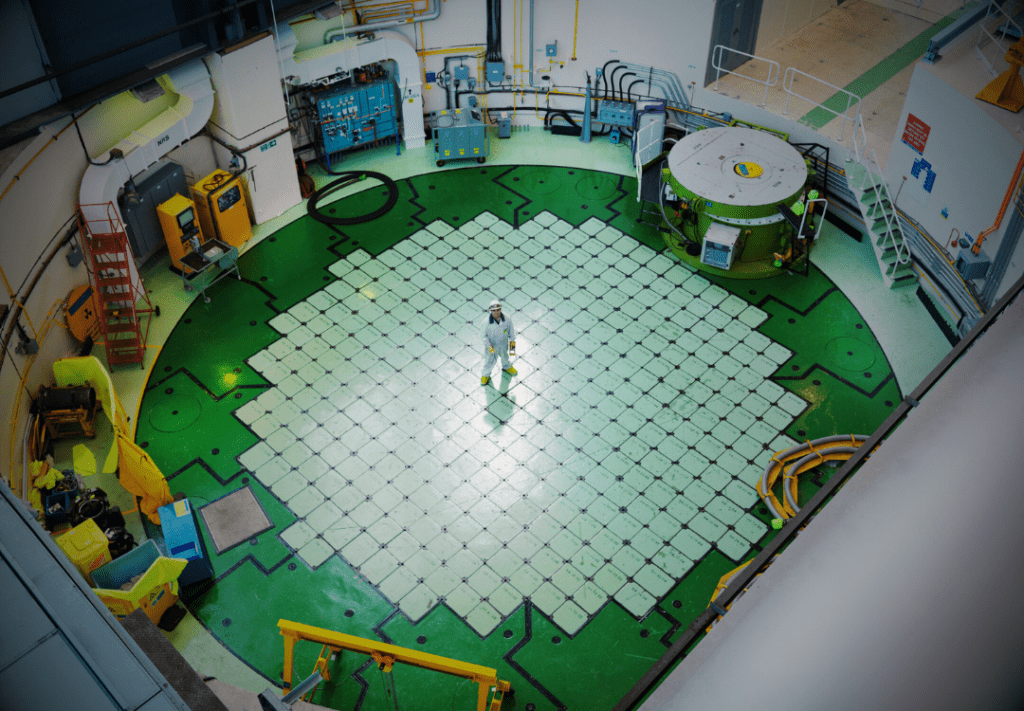OVERVIEW OF THE CHERNOBYL NUCLEAR DISASTER
The Chernobyl nuclear disaster is one of the deadliest nuclear accidents in history that occurred in northern Ukraine. On April 25, 1986, the workers of chernobyl at Reactor 4 were conducting a routine test to simulate a power outage.
While performing the test, the operators without realizing anything caused a very dangerous power failure inside the reactor, which made the core unstable from inside. After realizing this, the workers made a courageous effort to handle the situation by starting an emergency reactor shutdown, but it was too late. The power suddenly explodes, resulting a massive explosion and the reactor vessel was completely destroyed by releasing a massive cloud of harmful radioactive material into the atmosphere.
The fire released huge amount of radioactive materials in the air for more than ten days. This explosion tore the reactor building by exposing the core. For this, large areas of Belarus, Ukraine and all other neighboring countries surrounding the Chernobyl plant, have been contaminated with harmful radiations. While getting this news the Soviet Union quickly took a step to rescue more than 100,000 peoples from the surrounding neighborhood and also created an exclusion zone around the Chernobyl to stop further exposure to humans.
The area of the disaster soon became clearly visible as the radiation levels became highly poisonous, resulting in health risks to those who has been exposed. Poisonous radiation sickness affected many persons in contact and also to the clean-up workers, known as “liquidators,” who risked their lives to contain the fallout and stop further spread of contamination.
Meanwhile, the residents living in nearby towns and villages were still unaware of this life threatening exposure to the radiation. The authorities of the nuclear plant delayed the evacuations of the left survivors, leaving them to the exposure of harmful radiation surrounding the Chernobyl. After few days, the true news of the disaster became impossible to ignore as because lots of sickness and deaths have been reported.

nuclear disasters
WHAT IS A NUCLEAR REACTOR
A nuclear reactor is a device created to help and control nuclear reactions for many purposes, like generating electricity, producing isotopes for medical and industrial use, or moving nuclear-powered submarines and ships.

HOW DOES A NUCLEAR REACTOR WORKS
Fuel:The fuel is stored in the middle of the reactor which is high in uranium and contains lots of fuel rods that usually helps in moving out nuclear fuel.
Control Rods: Control rods helps in absorbing huge neutrons that helps in reducing collisions inside the fuel in affecting the speed of the nuclear reaction.
Coolant: Coolants are mainly form of water that helps in reducing the heat produced inside the reactor, releasing lots of steam.
Steam Generation: The heat transfer of the coolant generates steam with high pressure in an additional water cycle. From that, a turbine gets powered by the steam.
Turbine and Generator: High-pressure steam flows through the blades of the turbine resulting the turbine to rotate. The centered turbine is connected to a generator that turns the speed of the turbine into electrical power.
Cooling: After passing through the turbine, the steam evaporates in a compressor with cooling water from a nearby reservoir (such as any river or a cooling tower). The condensed water then flows back into the secondary loop to continue the procedure.
Safety Systems: Nuclear reactors are equipped with a comprehensive array of safety systems to guarantee safe operation and avert potential accidents. These encompass diverse control systems, auxiliary power sources, isolation structures, and fail-safe shut-down systems.
In summary, the reactor functions by regulating the pace of nuclear fission within the core, converting the released heat into steam, and utilizing the steam to drive a turbine-generator system that generates electricity.

EFFECTS OF CHERNOBYL NUCLEAR DISASTER
Health Effects: The disaster’s first responders experienced severe radiation sickness. Teenagers exposed to the radiation have seen an increase in diseases like thyroid cancer due to consumption of radioactive iodine-131.
Immediate Casualties: After the explosion and fire at reactor 4 of the Chernobyl,30 workers and fire-fighters died immediately as a result of severe radiation.
Contamination: The explosion contaminated nearby areas and spread radioactive remains over Europe by releasing huge quantities of radioactive particles into the atmosphere. The most seriously affected areas have been evacuated, and almost 300,000 people were moved as a result of the contamination. This led to the formation of the Isolation Zone that surrounds the plant.
Psychological Impact: The disaster had a major emotional effect, causing anxiety, stress, and mental health problems among both the clean-up workers and evacuees.
CONCLUSION
Chek out:








0 Comments